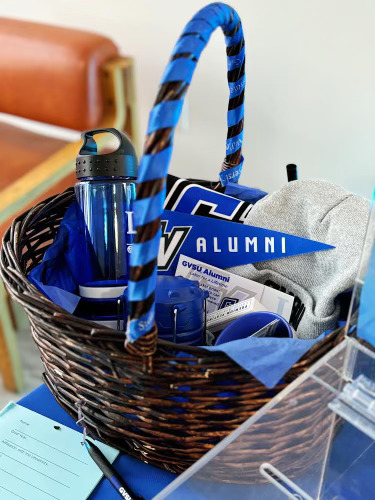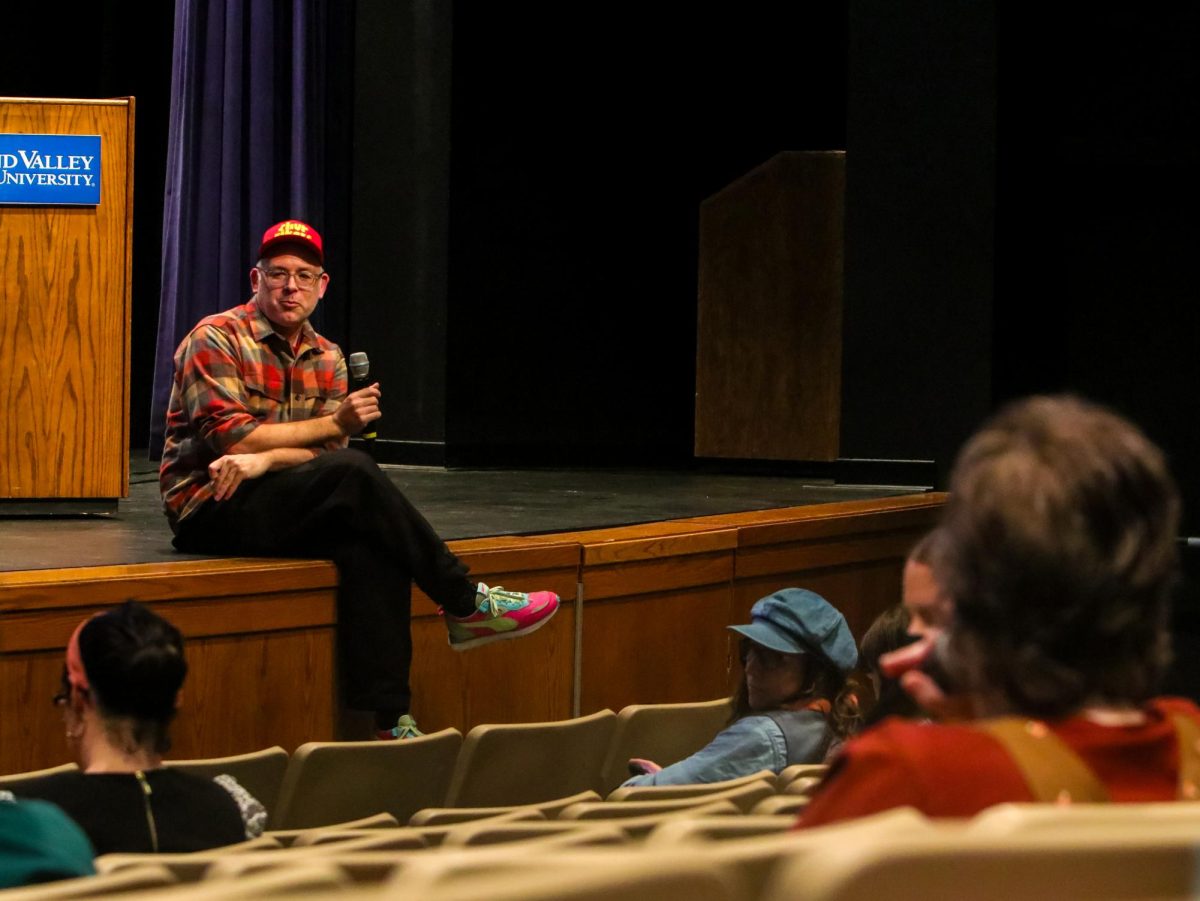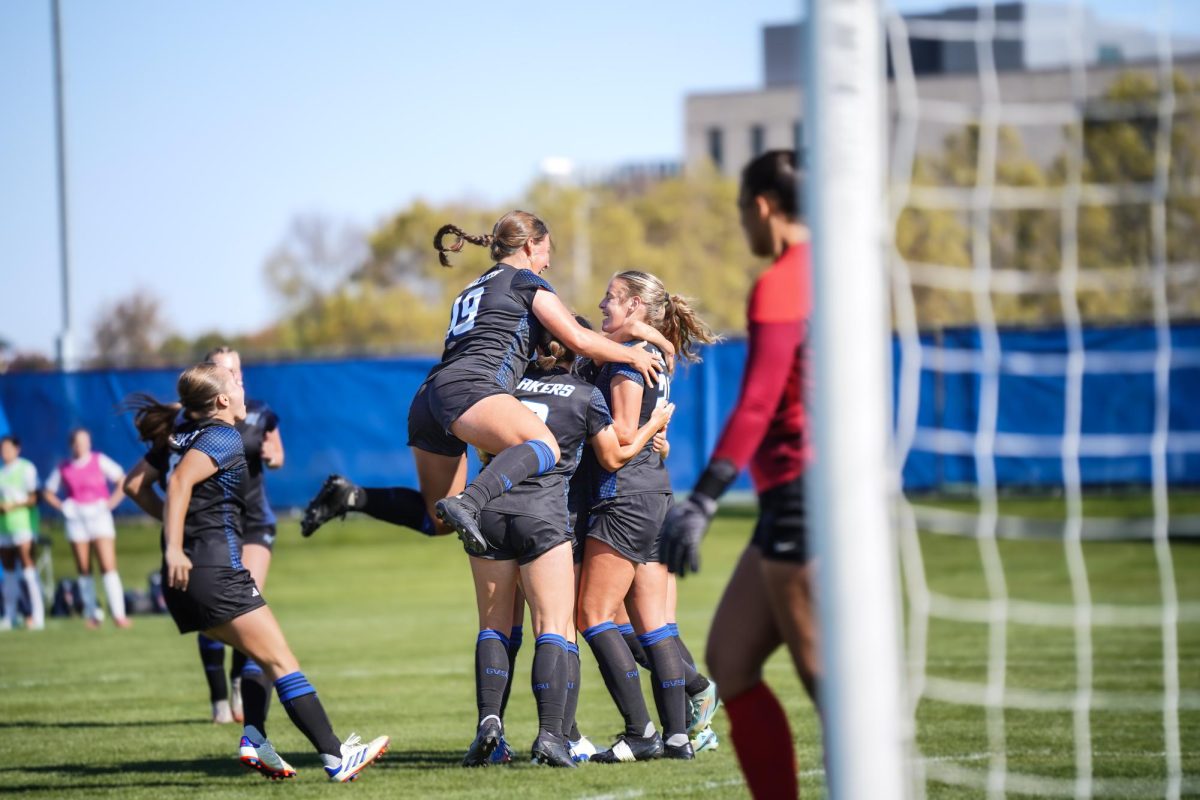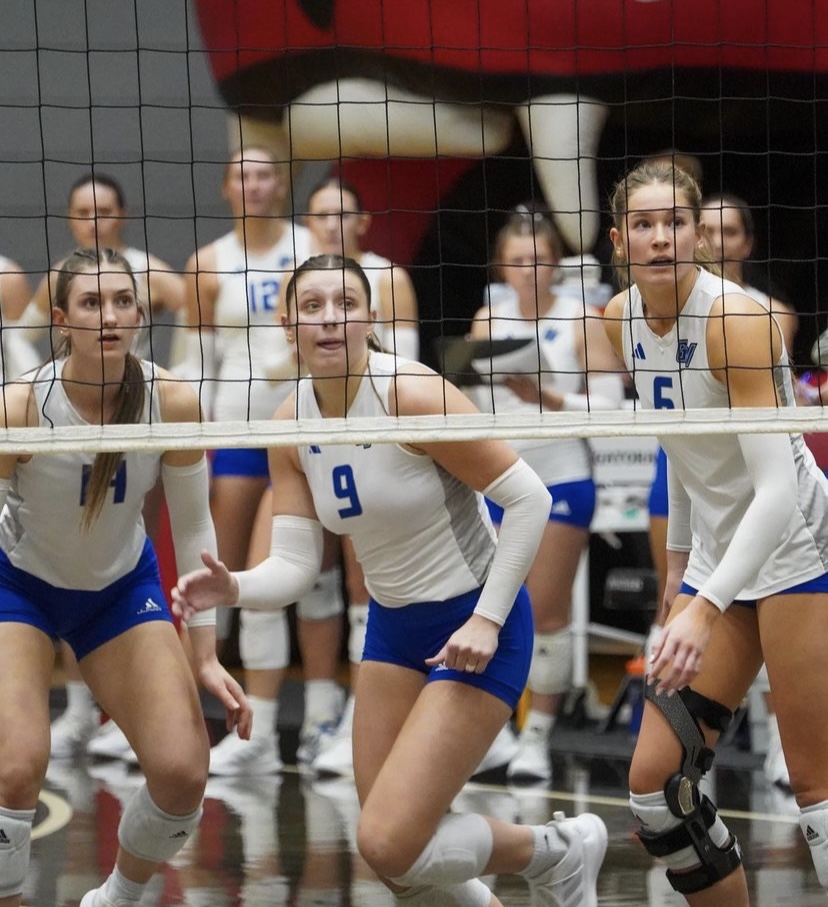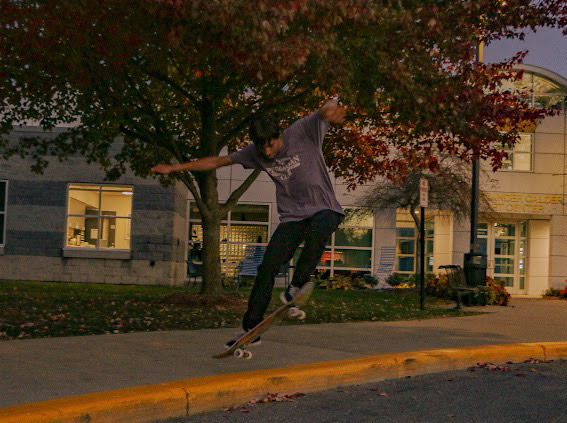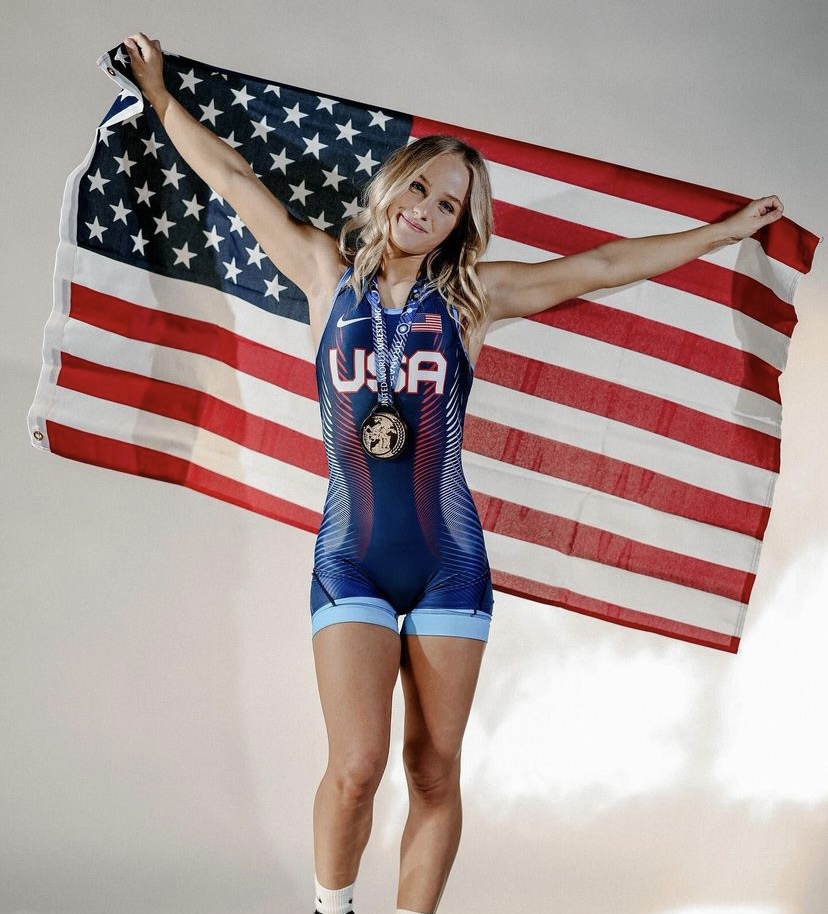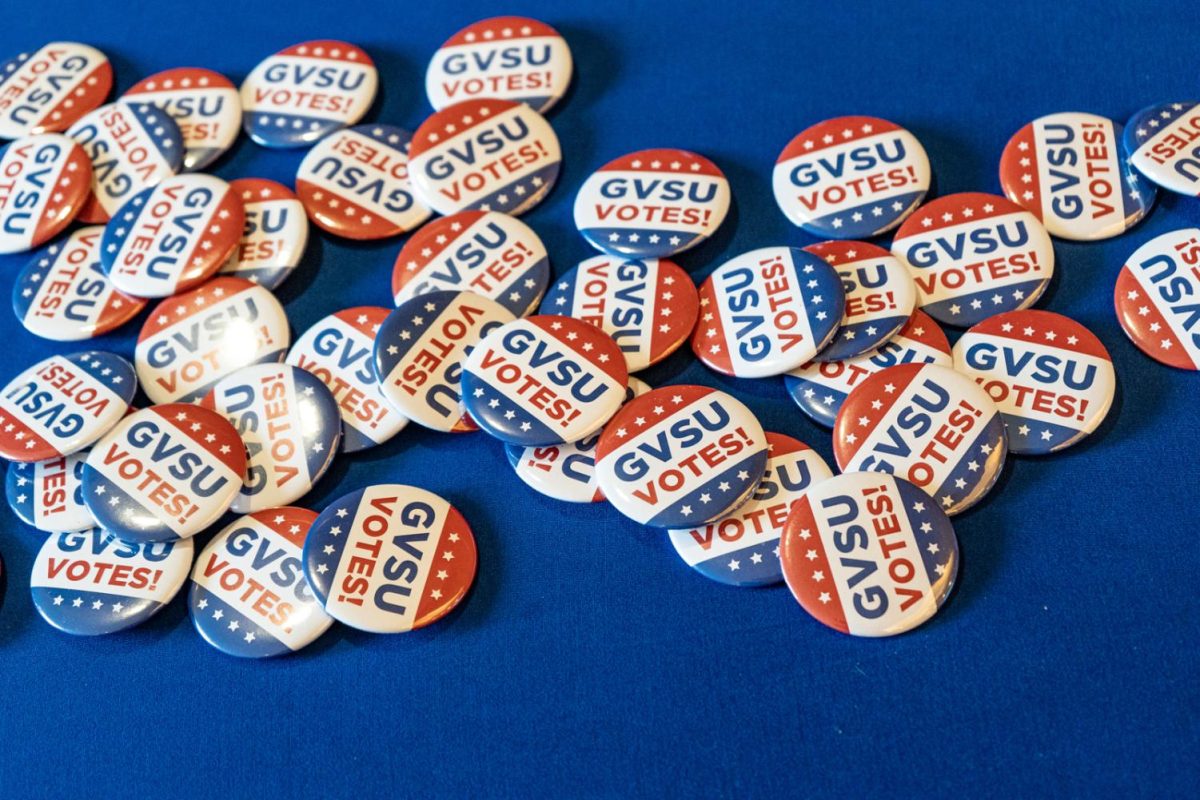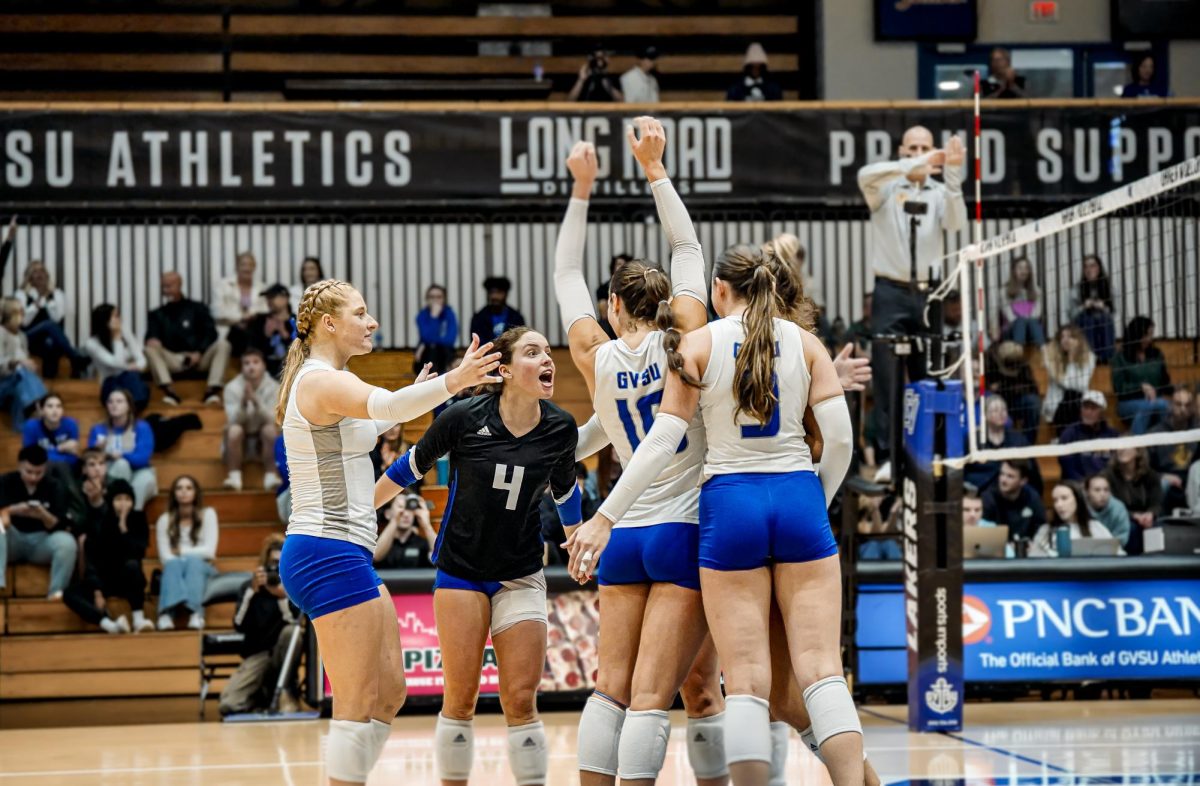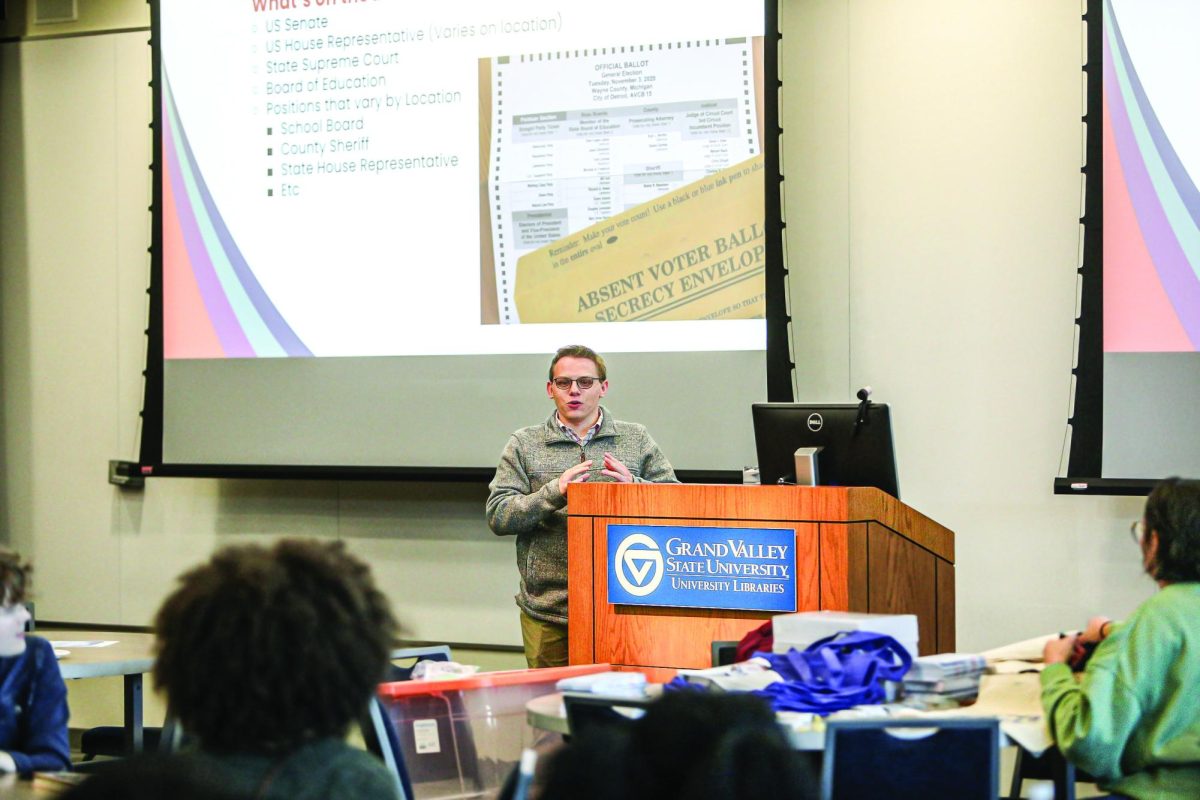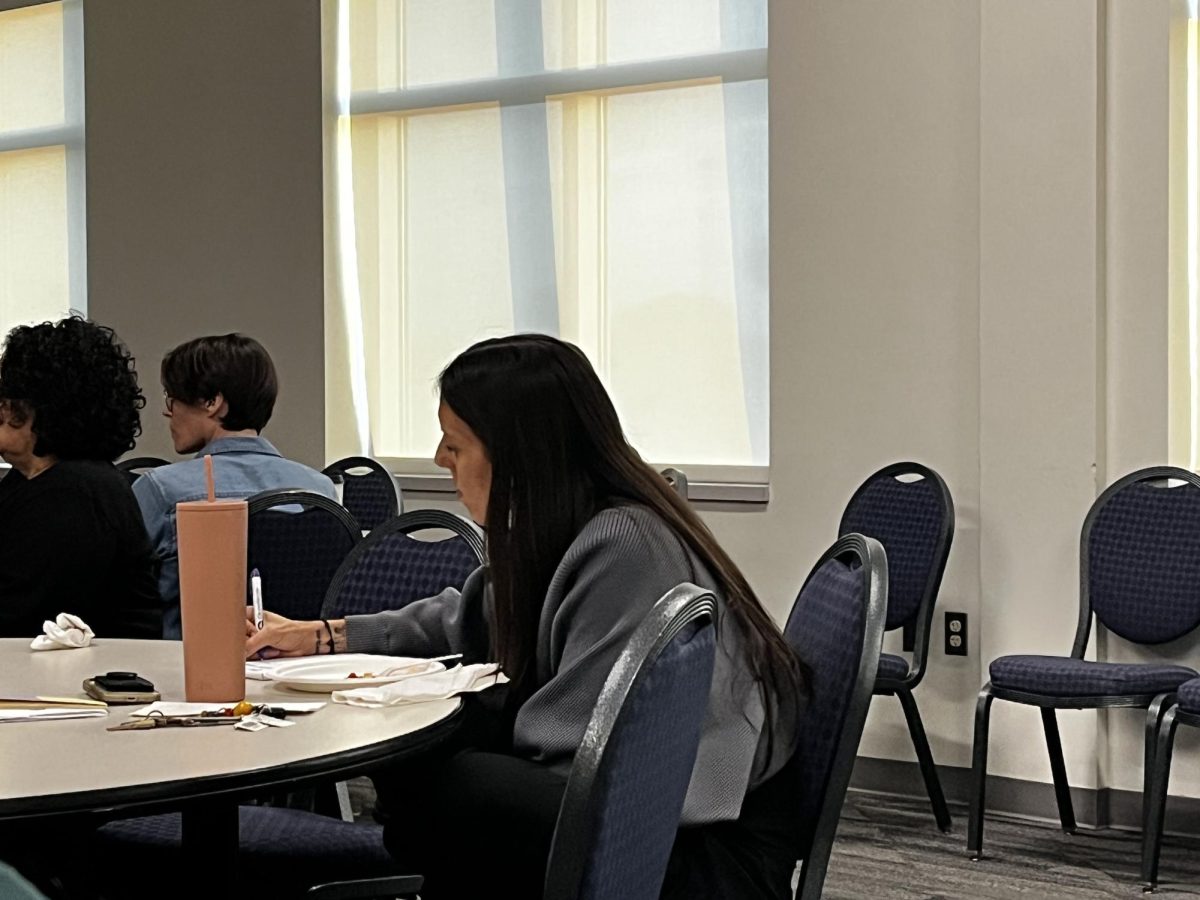GVSU faculty conduct study on classroom structure, student engagement
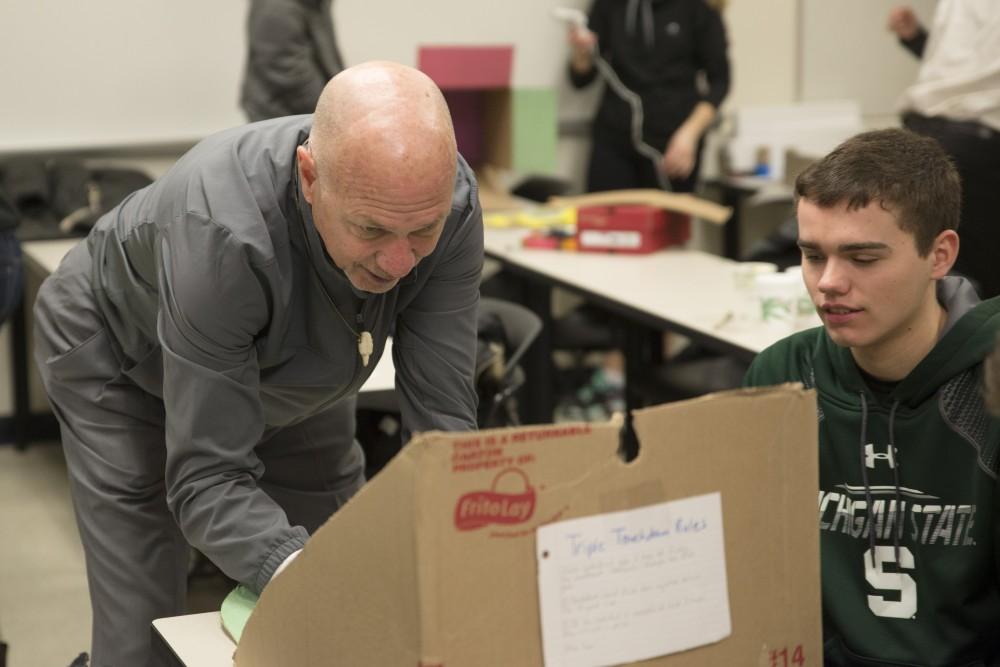
GVL / Luke Holmes – Professor Kilbourne tries out Brian Trager’s football game. Students worked on their projects in Mackinac Hall for the Cardboard Challenge Friday, Feb. 19, 2016.
Aug 28, 2017
When you think of a classroom, the image that comes to mind most likely includes straight rows of desks; standard, immobile chairs; and a spot for the teacher to stand front-and-center. This traditional classroom setup may have worked for past centuries of education, but current educators are finding that it is no longer benefiting students.
John Kilbourne, professor of movement science at Grand Valley State University, and Laura Kapitula, associate professor of statistics at GVSU, collaborated and studied over the past three years how “activity-permissible, evidence-based” classroom designs can increase student engagement and content retention.
“My background is in dance performance and education,” Kilbourne said. “Most of my college and university education was movement-based. Moving while learning has always been important to me.”
Kilbourne received a grant from GVSU’s Faculty Teaching and Learning Center to retrofit a classroom with exercise stability balls. He performed research on the classroom and the effect of enabling students to move on the exercise balls while learning, and this research went viral. Hundreds of newspapers, NPR, ABC News and other media outlets generated free publicity for the university and further sparked Kilbourne’s passion for active learning.
For the 2014-15 academic year, the researchers experimented with and collected data from a fourth-grade classroom at Mary A. White Elementary School in Grand Haven, Michigan. Kilbourne and Kapitula worked with Lennie Scott-Webber, former director of Education Environments Globally for Steelcase Education, to renovate and refurbish the room. Steelcase and Custer office furniture was used to equip the classroom with node chairs, buoy chairs, moveable tables, stools, chairs with personal desks attached and whiteboards with the funds from a $10,000 Grand Haven Area Community Foundation grant.
The researchs followed the 28 students and their teacher, Andrew Ratke, for the year. Regular measures were taken to gauge student involvement, student focus, student material retention and overall student success.
“The study used a mixed approach with both observational and quantitative evaluations,” Kapitula said. “The data was collected through many hours of classroom observation, teacher interviews and through student surveys.”
More than 250 different behaviors were observed, and the results they found from placing students in a mobile, activity-permissible classroom were pivotal.
“Both the quantitative and the qualitative piece indicated the activity-permissible classroom supported many types of collaboration and student engagement,” Kapitula said. “Ninety-six percent of responding students reported greater support for group work in the new classroom as compared to a traditional style classroom, and about 85 percent reported greater ability to engage with the subject matter and receive feedback from the teacher.”
The full findings from this study have recently been published in “Children, Youth and Environments” in the article “An Activity-Permissible Classroom: Impacts of an Evidence-Based Design Solution on Student Engagement and Movement in an Elementary School Classroom.”
After these findings, Kapitula and Kilbourne are both advocates for learning with movement in activity-permissible classrooms, and they believe there are practical ways for any teacher to incorporate these strategies into their educational approach.
“Given my involvement in this work, I have been much more aware of how classroom design impacts my own teaching,” Kapitula said. “Do not be afraid to have students turn towards each other and work together. In my classes, I strive for there to be a mix of individual student-to-student, student-to-professor and professor-to-whole-class interactions.”
Kilbourne said he preferred activity-permissible classrooms to their traditional counterparts.
“I am so much more comfortable in an activity-permissible classroom, and the students are far more engaged with other students and the content,” he said. “Begin as I did with a small grant and purchase exercise balls. Then, anytime there is opportunity to purchase new classroom chairs and desks, look to the research and lobby hard for activity-permissible classroom options.”
Kilbourne suggests visiting www.steelcaseeducation.com for more insights and applications about activity-permissible classrooms.




